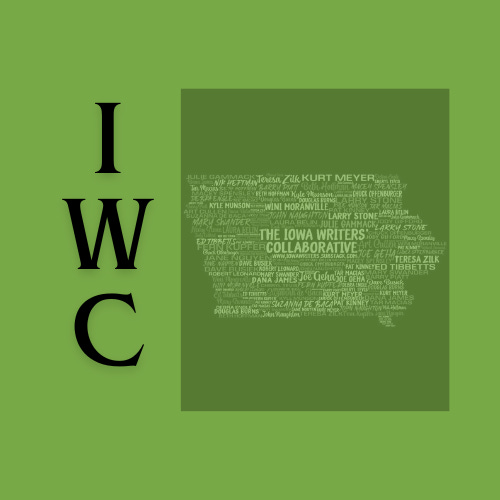I’m Chris Gloninger, and I’ve always been passionate about meteorology. My first birthday was spent without electricity as Hurricane Gloria had just passed through our village of Sag Harbor, New York. After Hurricane Bob, I was hooked on weather! In elementary school, everyone knew I was destined to become a meteorologist. I would draw maps of Long Island with severe weather graphics, insisting my parents listen as I explained the watches and warnings.
After receiving my bachelor’s degree in meteorology from Plymouth State University in Plymouth, New Hampshire, I started my first on-air job at WHEC in Rochester, New York. While there, I taught an Intro to Meteorology course at Monroe Community College. During my first autumn in the region, a friend and I drove to Buffalo to experience the “October Surprise” - the 2006 blizzard that dropped 24 inches of snow. My next stop was WTEN in Albany, New York. Unfortunately, after only a few months, my position was eliminated which was quite a learning experience. During my job hunt, I earned my first AMS certification, the CBM, becoming the youngest person to do so. I received calls from various stations across the country and settled on WNEM in Saginaw, Michigan. There, I had the opportunity to broadcast from the studio and report from the field on flood events, historic ice floes, and blizzards. My next job took me back to Albany at WRGB. Here I tracked lake effect snowstorms and covered the devastation of Hurricanes Irene and Lee. I volunteered on my days off to help salvage what we could of a historic bridge. I was also sent to Queens, Lower Manhattan, and Staten Island to cover Hurricane Sandy, witnessing the unimaginable destruction.
WISN in Milwaukee, Wisconsin, was my next stop. After extensive field experience, I covered an EF-4 tornado in Illinois and historic ice coverage across the Great Lakes. It was at WISN that I met my wife. We married in Milwaukee and moved to Boston for my job at WBTS. During my five years in Boston, I established the nation’s first weekly segment on climate change. Then, after recently covering Hurricanes Harvey, Irma, Dorian, and Florence, I came to truly understand the urgency of climate change. These experiences, along with my pre-television jobs of firefighting and traffic control, led to my master’s degree in emergency management from Millersville University in Pennsylvania. This degree got me back into the classroom, teaching at Boston University.
My climate change coverage in Boston caught the attention of KCCI in Des Moines, Iowa, where I was offered the Chief Meteorologist position. Less than six months after starting, I was on-air for six consecutive hours covering the state’s largest tornado outbreak in recorded history on December 15, 2022. During my time in Iowa, I experienced numerous rounds of tornadoes, large hail, and damaging winds. When appropriate, I tied weather events to climate change, which resulted in a death threat and subsequent harassing emails. The police caught the main culprit, but it left my wife and me unnerved. After some soul searching, I started working for Arcadis, an environmental engineering company, exploring a career path outside of TV. This work reopened my relationship with Woods Hole Group, which developed a role for me where my skillset could be integrated into their business model.
That’s enough about me, so why am I starting a Substack account? June 2024 marked the 12th consecutive month where the global average temperature was 1.5°C above pre-industrial levels. Climate models show a temporary pause in extreme warming, perhaps for the next several years, because of natural variability temporarily dropping back below that foreboding number of 1.5°C. However, the last 12 months are a preview of our future climate. The 2024 election is high stakes when it comes to climate change. One candidate passed the most robust climate legislation to date, the other promises to dismantle the research arm of NOAA, which would have devastating impacts on our efforts to right the ship.
Last year’s research by the Yale Program on Climate Change Communication (in partnership with George Mason University) found that 72% of Americans think global warming is happening. Unfortunately, only 58% of Americans feel that global warming is caused by humans. Atmospheric and Climate Scientists have more data that humans are causing climate change than medical doctors have that smoking causes cancer. It’s my goal to help boost that 58% to 100%. Our planet is warming. Our weather is getting more extreme. Our society can’t handle our new future if we don’t make the systematic changes needed to save our planet.
I am happy to be part of the Iowa Writer’s Collaborative.








Welcome back to Iowa!! Even if it’s virtually 👏👏The Sparks, Christine Curry and I are excited to hear about your Substack!!
Can you verify human choices in Iowa that will mitigate rising temperatures and more rainstorms causing flooding? Reducing greenhouse gas emissions? Replacing natural gas burning furnaces and water heaters with heat pump equipment powered by wind and solar generated electricity? Replacing gasoline (and ethanol) powered vehicles with electric battery powered vehicles?